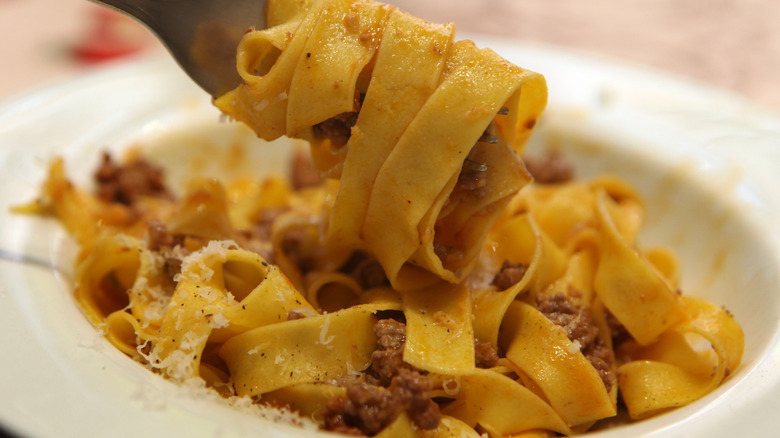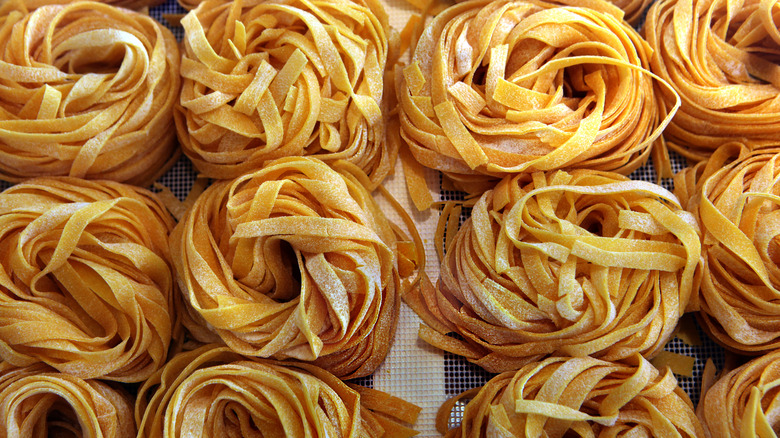The Pasta Exception You Need To Know When Making Ragù Bolognese
We've talked about how fresh pasta isn't always better than dry pasta and how each has a specific purpose in Italian cuisine. Fresh pasta complements dairy-based sauces, while dry pasta goes better with oil or meat-based sauces. There is an exception to this rule, however: ragù bolognese.
We've all eaten this in one form or another. Any child who grew up eating nana or mom's meat sauce with spaghetti has experienced the inspiration of ragù bolognese. But did you notice how the sauce wouldn't really stick to the spaghetti? That's for two reasons: spaghetti is cylindrical instead of flat, and your mom likely used dried spaghetti from a box.
The traditional ragù bolognese, as made in Northern Italy, uses fresh pasta. The use of egg and the flatness of the pasta allow for the sauce to be absorbed and captured. According to epicurious, the addition of simmered whole milk to the sauce creates a "rich, creamy consistency" which is perfect for fresh pasta.
Pappardelle vs Tagliatelle: Which Should You Use?
The question remains, however — which type of fresh pasta should you use? Type "fresh pasta ragù bolognese" recipe into Google and you'll be immediately greeted with two different answers: pappardelle and tagliatelle.
To be clear, either works with a ragù bolognese. The crux here is — how traditional do you want to be?
As described by Massimo Bottura in his MasterClass, pappardelle comes from the central Italian region of Tuscany. It can be made with any type of wheat, but always with egg and always cut wide and flat. Pappardelle is the traditional pasta for Tuscany's own special ragù di cinghiale (wild boar ragù).
Tagliatelle, again from Bottura, is the pasta you'll find in your ragù bolognese if you visit Bologna in the northern region of Emilia-Romagna. Derived from the Italian for "to cut", tagliatelle is another wide, sturdy, flat pasta made with egg. That structure allows it to hold up well to heavier sauces, such as ragù bolognese.
The two pastas are interchangeable, owing to their similarity in shape and structure, so your choice really depends on personal preference and if you care about doing things "the right way". Ask any Italian and they'll certainly have an opinion.

